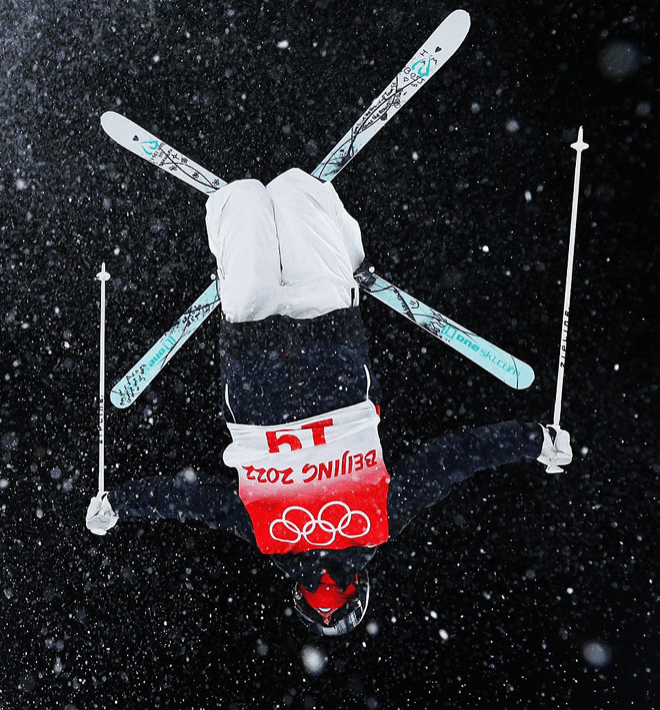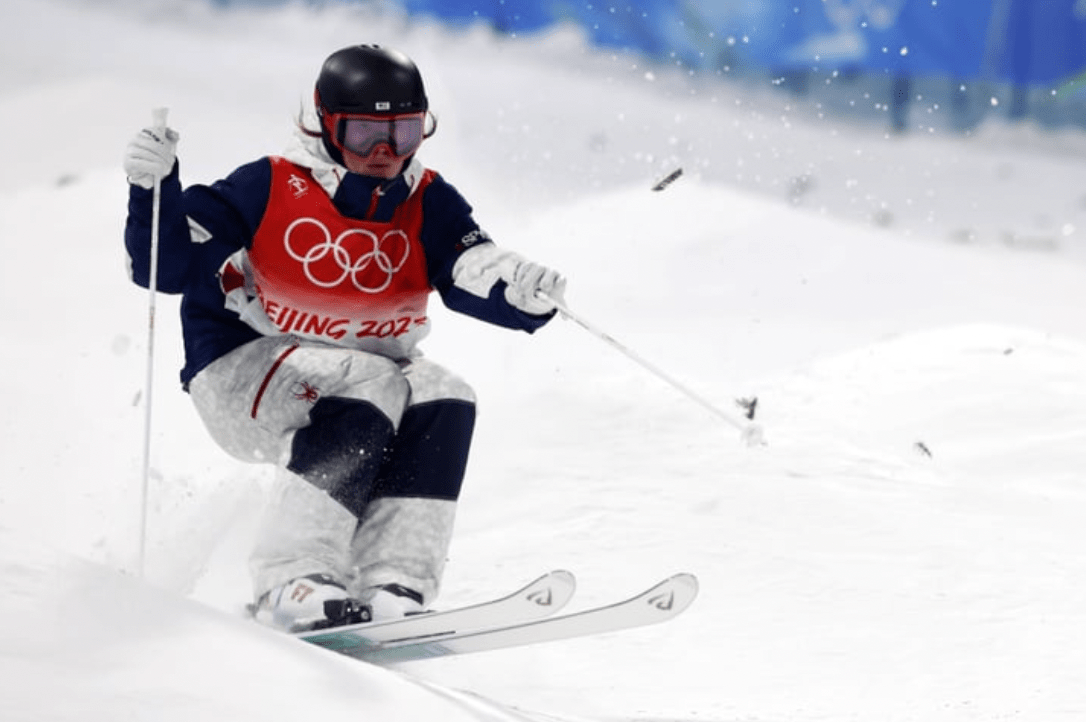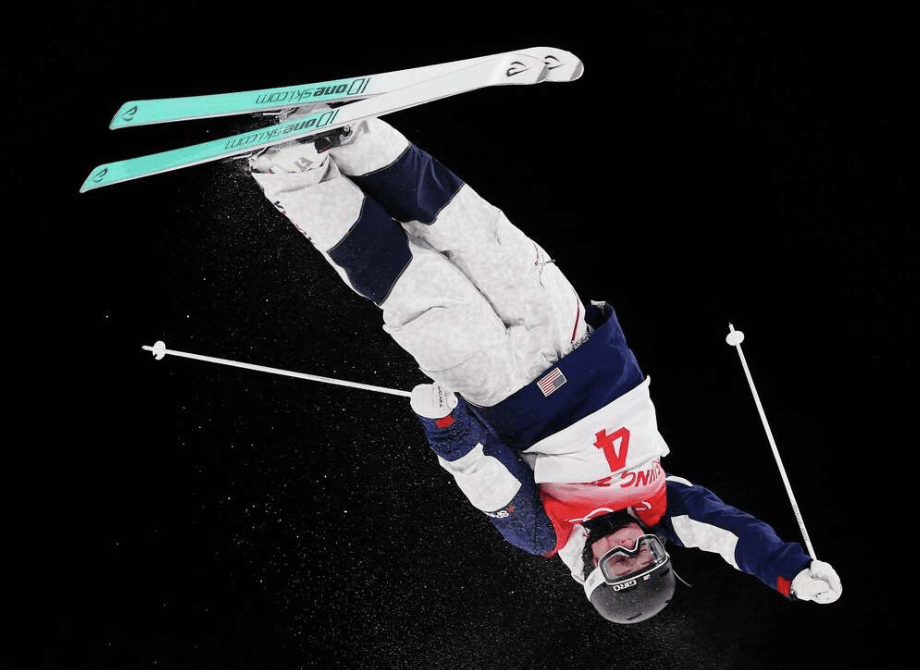
Freestyle mogul skiing combines fast-paced mogul skiing with technical aerobatic jumps, including flips and spins. The course features over 650-feet (200-meters) of moguls, with two jumps, one at the top one 40 bumps from the end. The event is judged based on how fast the course is completed, precision, and technique through the moguls and additional points for tricks pulled at the top and bottom.
Athletes have to be able to ski moguls with ease, launch into the air, and land just in time to start crushing moguls again. How do they do it? It all comes down to precision.
Athletes spend months perfecting their timing and posture for take-off. Before even testing it on snow, they launch into lakes or off trampolines. After perfecting the speed and the proper posture needed to initiate their flips and spins, they finally add moguls into the equation.

Once an athlete is in the air, they cannot create any new lift. Any trick pulled during a run is planned out and initiated before take-off. This requires a serious amount of muscular discipline and precision from the athlete
In this event, posture is imperative. When athletes have more than one trick lined up, they have to prepare themselves properly before sending it. By leaning, left, right, back, or forward they are directing their energy that way, allowing their body to begin rotation once in the air.
Once in the air, they manipulate their body in different ways to complete their desired trick. By sticking their arms out, they may slow their rotation down. They can initiate somersaults and spins by twisting their core and changing posture. Some athletes can be seen grabbing their skis when looking for their landing.
Anyone who has skied bumps can imagine the amount of strength required from these athletes to stomp a trick and immediately enter into a zipper line. Freestyle Mogul skiing is an excellent exhibit of the muscle control and strength these Olympic athletes maintain through dedicated training.
